There are many annual spring flowers that begin/start with the letter K, consisting of the Kaffir Lily, Kiwi Flowers, Kangaroo Paw Flower, Kniphofia ‘Little Maid’, Kiss Me Not Flower, Kniphofia, King Protea, Kolkwitzia, Knautia Arvensis, Kolkwitzia Dream Catcher, Magnolia Kobus, Kniphofia ‘Percy’s Pride’, Kniphofia Bees Lemon, Kyushu Meadow Rue, King’s Mantle, Kalmia, Keli Flower, Kalanchoe, Kangkung (Ipomoea Aquatica), King Solomon’s Seal (Polygonatum), Kidney vetch (Anthyllis Vulneraria) and Kobus Mag.
The global of flora is a significant and vibrant one, with blooms of all colors, shapes, and sizes. Some flowers are common and acquainted, even as others are more rare and exotic. But regardless of what their foundation or appearance, all plants have one component in commonplace: they’re beautiful.
In this blog post, we can explore a number of the many plants that begin with the letter K. From the delicate Knautia macedonica to the majestic King protea, these plants are certain to amaze and delight you.
Whether you are a pro gardener or certainly a lover of splendor, we hope you revel in this adventure thru the sector of plants that begin with K.
Read on to research more approximately these charming flora and to find out the mysterious tales that surround them.
| 1 . Knautia Macedonica | 2 . Kaffir Lily |
| 3 . Kiwi Flowers | 4 . Kangaroo Paw Flower |
| 5 . Kniphofia ‘Little Maid’ | 6 . Kiss Me Not Flower |
| 7 . Kniphofia | 8 . King Protea |
| 9 . Kolkwitzia | 10 . Knautia Arvensis |
| 11 . Kolkwitzia Dream Catcher | 12 . Magnolia kobus |
| 13 . Kniphofia ‘Percy’s Pride’ | 14 . Kniphofia Bees Lemon |
| 15 . Kyushu Meadow Rue | 16 . King’s Mantle |
| 17 . Kalmia | 18 . Keli Flower |
| 19 . Kalanchoe | 20. Kangkung (Ipomoea Aquatica) |
| 21. King Solomon’s Seal (Polygonatum) | 22. Kidney vetch (Anthyllis Vulneraria) |
| 23. Kobus Magnolia (Magnolia Kobus) | 24. Kiss me over the garden gate (Polygonum Orientale) |
| 25. Kohlrabi (Brassica Oleracea) | 26. Kunzea (Kunzea Ambigua) |
List of 26 Flowers that start with k :
1 . Knautia Macedonica
Knautia Macedonica, also known as the Macedonian Scabious, is a stunning perennial flower native to the Balkans. Its intriguing name comes from Dr. Christian Knaut, a 17th-century German botanist. This flower is known for its vibrant crimson blooms that resemble pincushions, attracting pollinators like bees and butterflies.
Interesting Facts:
- Knautia Macedonica is a favorite among gardeners for its long-lasting blooms that make it a great addition to any flower bed.
- It has been used in traditional herbal medicine for its anti-inflammatory properties.
Mystery Story: Legend has it that in the Macedonian village of Zleovo, there’s a hidden grove of Knautia Macedonica where fairies are said to dwell. Locals believe that anyone who finds this grove will be granted a single wish. Many have ventured into the nearby forest in search of the elusive flowers, but few have returned, leaving behind a mystery that continues to captivate the village to this day.
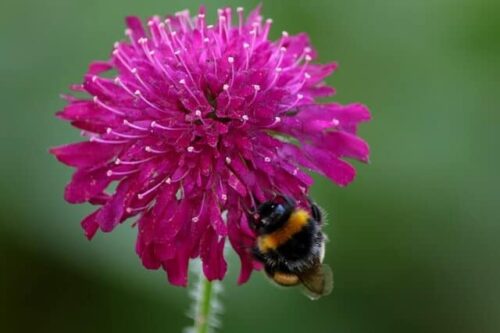
2 . Kaffir Lily
Kaffir Lily, also known as Clivia Miniata, is a striking flowering plant native to South Africa. It is named after Lady Charlotte Clive, the Duchess of Northumberland, who was a prominent figure in British horticulture during the 19th century. This plant is famous for its lush, dark green foliage and clusters of bright orange, trumpet-shaped flowers.
Interesting Facts:
- Kaffir Lily is often associated with good luck and is a popular gift during celebrations in South Africa.
- It’s a low-maintenance houseplant that can thrive in indirect sunlight, making it a favorite among indoor gardeners.
Mystery Story: In the heart of the African savanna, there’s said to be a hidden grove of Kaffir Lilies. According to local folklore, anyone who finds this grove during a lunar eclipse will be granted the ability to communicate with animals for a single night. Many have embarked on moonlit quests to locate this mystical grove, hoping to unlock the secrets of the animal kingdom.
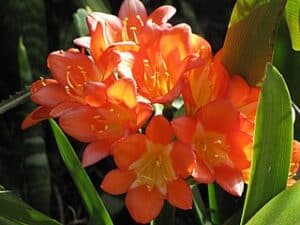
3 . Kiwi Flowers
Kiwi Flowers, also known as Actinidia, are the blossoms of the kiwi fruit vine. While kiwi fruits are well-known for their delicious taste and vibrant green flesh, the flowers themselves are often overlooked. These small, fragrant blooms are a crucial part of the kiwi’s reproductive process.
Interesting Facts:
- Kiwi flowers are dioecious, which means there are separate male and female plants. Only the female plants produce fruit.
- The scent of kiwi flowers is often described as sweet and inviting, attracting pollinators like bees.
Mystery Story: In a remote New Zealand forest, there’s a legend of a hidden garden filled with kiwi flowers that bloom only under the light of a full moon. It is believed that those who find this garden during a lunar eclipse will gain the power to understand the secret language of birds. Explorers have embarked on moonlit journeys in search of this mystical garden, hoping to unlock the wisdom of the feathered realm.
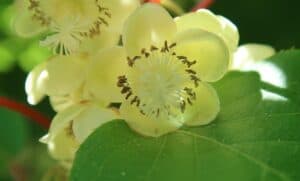
4 . Kangaroo Paw Flower
The Kangaroo Paw Flower, scientifically known as Anigozanthos, is native to Australia and is known for its unique and vivid tubular flowers that resemble the paw of a kangaroo. These flowers come in various colors, including red, orange, and yellow, and are a favorite among gardeners and florists.
Interesting Facts:
- Kangaroo Paw Flowers are well-adapted to the Australian climate and have developed a symbiotic relationship with certain native birds for pollination.
- They are often used in floral arrangements and are the floral emblem of Western Australia.
Mystery Story: Deep in the Australian Outback, there is a legend of a hidden valley where Kangaroo Paw Flowers bloom in colors never seen before by humans. It is said that anyone who discovers this valley will be granted the power to communicate with kangaroos and gain their incredible leaping abilities. Adventurers have ventured into the wilderness in pursuit of this myth, hoping to unlock the secrets of the kangaroo.

5 . Kniphofia ‘Little Maid’
Kniphofia ‘Little Maid,’ commonly known as Red Hot Poker ‘Little Maid,’ is a unique perennial flower known for its striking spikes of tubular flowers that vary in color from creamy white to pale yellow. These flowers add a dramatic touch to any garden or landscape.
Interesting Facts:
- The Red Hot Poker plant is a favorite among hummingbirds due to its tubular flowers, which provide a nectar source.
- It is native to South Africa and is drought-tolerant, making it an excellent choice for xeriscaping.
Mystery Story: In the remote hills of South Africa, there’s a tale of a hidden garden where Kniphofia ‘Little Maid’ blooms with petals that emit a soft, enchanting glow during the full moon. According to legend, those who find this garden during a lunar eclipse will be blessed with the ability to heal wounds and cure ailments with a single touch. Healers and seekers have ventured into the wilderness, guided by the soft radiance of the flowers, hoping to harness the power of healing.
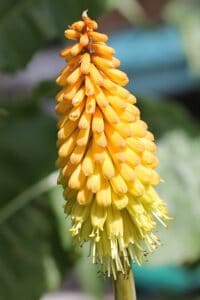
6 . Kiss Me Not Flower
The Kiss Me Not Flower, scientifically known as Impatiens balsamina, is an annual flowering plant native to Asia. It is named for its unique seed pods that, when touched, burst open explosively, scattering seeds in all directions.
Interesting Facts:
- The name “Kiss Me Not” suggests that the seeds are reluctant to be kissed and prefer to disperse themselves.
- The flowers come in various colors, including shades of pink, red, and purple, making them a popular choice for garden borders.
Mystery Story: In the heart of an ancient Asian forest, there’s a legend of a hidden glade where Kiss Me Not Flowers bloom under the light of the fireflies. It is said that anyone who discovers this glade during a summer solstice will gain the power to communicate with woodland creatures and understand the language of the trees. Adventurers have embarked on moonlit journeys to find this mystical grove, eager to unravel the secrets of the forest.
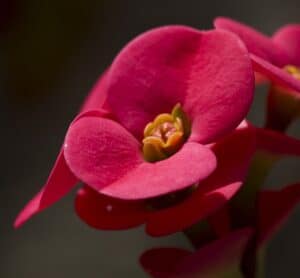
7 . Kniphofia
Kniphofia, commonly known as Red Hot Poker or Torch Lily, is a genus of flowering plants native to Africa. These plants are known for their tall spikes of tubular flowers that vary in color from red and orange to yellow. They are a favorite of hummingbirds and add a striking vertical element to gardens.
Interesting Facts:
- The Red Hot Poker is known for its ability to thrive in poor soil conditions and is drought-tolerant, making it a hardy garden plant.
- The flower spikes resemble torches, hence the name “Torch Lily.”
Mystery Story: Deep within the African savanna, there’s a tale of a hidden oasis where Kniphofia blooms in colors that seem to dance with the flickering light of an eternal flame. Legend has it that those who find this oasis during a solar eclipse will be granted the power to control fire itself. Brave explorers have embarked on expeditions to locate this mystical oasis, hoping to harness the elemental power of fire.

8 . King Protea
The King Protea, scientifically known as Protea cynaroides, is a striking and iconic flower of South Africa. It is the largest of all protea species and gets its name from its resemblance to a crown. This flower is not only renowned for its beauty but also holds cultural significance in South Africa.
Interesting Facts:
- The King Protea is the national flower of South Africa and represents both strength and beauty.
- Its large, woody seed cones are often used in floral arrangements and are referred to as “sugarbushes.”
Mystery Story: In the rugged terrain of South Africa’s Cape region, there’s a legend of a hidden valley where King Protea blooms in vibrant shades not found anywhere else on Earth. It is believed that those who find this valley during a rare celestial alignment will be granted the ability to speak the language of the mountains and understand the ancient secrets of the land. Adventurers have embarked on arduous journeys, guided by the whispers of the wind through the protea petals, in search of this mystical valley.
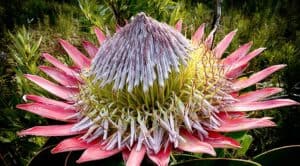
9 . Kolkwitzia
Kolkwitzia, commonly known as Beautybush, is a deciduous shrub native to China. It is prized for its arching branches covered in delicate, bell-shaped pink or white flowers. This plant is a favorite among gardeners for its graceful appearance and ease of cultivation.
Interesting Facts:
- Kolkwitzia was named after Richard Kolkwitz, a German botanist known for his contributions to the study of algae.
- The flowers of Beautybush are highly attractive to pollinators, including bees and butterflies.
Mystery Story: In the remote valleys of China, there’s a tale of a hidden glen where Kolkwitzia blossoms with petals that emit a soft, soothing fragrance during the spring equinox. Legend has it that those who find this glen during this auspicious time will be granted the ability to heal wounded souls and bring peace to troubled hearts. Seekers of solace have embarked on pilgrimages to discover this mystical glen, guided by the whispers of the gentle breeze among the Beautybush blooms.
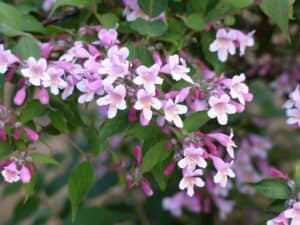
10 . Knautia Arvensis
Knautia arvensis, also known as Field Scabious, is a wildflower native to Europe and Asia. It is recognized for its delicate, lavender-blue flowers that attract a wide range of pollinators, including bees, butterflies, and hoverflies. This flower is often found in meadows and grasslands.
Interesting Facts:
- Field Scabious has been used in traditional medicine for its purported healing properties, particularly in treating skin ailments.
- It plays an essential role in supporting local ecosystems by providing nectar and pollen to pollinators.
Mystery Story: Deep within the rolling hills of Europe, there’s a legend of a hidden valley where Knautia arvensis blooms with petals that shimmer under the light of the stars. It is said that anyone who finds this valley during a meteor shower will be granted the power to understand the language of the night and converse with celestial beings. Stargazers and dreamers have embarked on nocturnal journeys to uncover this mystical valley, hoping to connect with the cosmos.
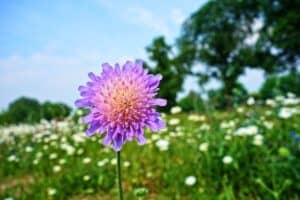
11 . Kolkwitzia Dream Catcher
Kolkwitzia Dream Catcher, a cultivar of the Beautybush (Kolkwitzia), is known for its vibrant golden foliage and delicate pink or white flowers. This shrub is a stunning addition to gardens and landscapes, adding a touch of brightness and elegance.
Interesting Facts:
- The name “Dream Catcher” is inspired by the plant’s golden leaves, which resemble the traditional Native American talisman believed to catch and protect against bad dreams.
- Kolkwitzia Dream Catcher is a low-maintenance shrub that thrives in various soil conditions.
Mystery Story: In a secluded garden tucked away in the heart of a European village, there’s a tale of a hidden courtyard where Kolkwitzia Dream Catcher blooms under the light of a crescent moon. It is said that anyone who stumbles upon this courtyard during a lunar eclipse will be granted the ability to enter the dreams of others and influence their subconscious thoughts. The curious and imaginative have ventured into the village’s labyrinthine alleys, hoping to unlock the secrets of the dream world.
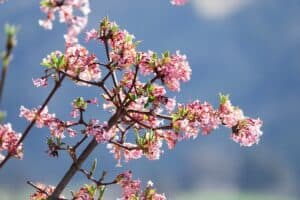
12 . Magnolia kobus
Magnolia Kobus, also known as Kobushi Magnolia, is a deciduous tree native to East Asia. It is celebrated for its early spring blossoms of fragrant, star-shaped white flowers that appear before the emergence of leaves. Magnolia Kobus is a symbol of purity and renewal.
Interesting Facts:
- The word “Kobushi” in its name means “fist” in Japanese, referring to the bud’s resemblance to a closed fist before it unfurls into a flower.
- The tree’s wood has been used in traditional Japanese crafts, such as making bokken (wooden swords) and furniture.
Mystery Story: In the serene forests of Japan, there’s a legend of a hidden grove where Magnolia Kobus blooms with petals that emit a gentle, melodic hum when caressed by the wind. It is believed that those who find this grove during a cherry blossom festival will be blessed with the gift of composing music that captures the essence of nature. Musicians and composers have embarked on pilgrimages to discover this mystical grove, guided by the harmonious whispers of the Magnolia blossoms.
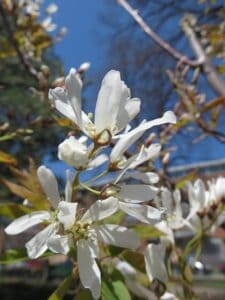
13 . Kniphofia ‘Percy’s Pride’
Kniphofia ‘Percy’s Pride,’ commonly known as Red Hot Poker ‘Percy’s Pride,’ is a striking perennial flower with tall spikes of tubular blooms in shades of red, orange, and yellow. This variety is known for its vibrant colors and its attractiveness to pollinators like hummingbirds.
Interesting Facts:
- The Red Hot Poker ‘Percy’s Pride’ is a hardy plant that can thrive in a variety of soil conditions, making it suitable for different garden settings.
- Its fiery colors and long-lasting blooms make it a favorite choice for adding drama to garden borders.
Mystery Story: In the remote mountains of South Africa, there’s a tale of a hidden plateau where Kniphofia ‘Percy’s Pride’ blooms with petals that seem to capture the essence of the setting sun. Legend has it that those who find this plateau during a solar eclipse will be granted the power to manipulate light and create breathtaking displays of colors in the sky. Adventurers and artists have embarked on journeys to locate this mystical plateau, hoping to harness the magic of the sunsets.
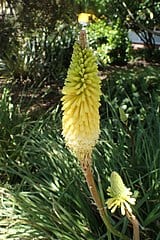
14 . Kniphofia Bees Lemon
Kniphofia Bees Lemon, also known as Yellow Hot Poker, is a variety of Red Hot Poker known for its bright yellow tubular flowers. This perennial plant is a magnet for pollinators, especially bees, and adds a burst of color to gardens.
Interesting Facts:
- The bright yellow flowers of Kniphofia Bees Lemon are a cheerful addition to garden landscapes and are often used in flower arrangements.
- This plant is drought-tolerant and can thrive in dry conditions, making it a resilient choice for gardens.
Mystery Story: In the heart of a vibrant African savanna, there’s a legend of a hidden meadow where Kniphofia Bees Lemon blooms under the watchful eyes of honeybees. It is believed that anyone who discovers this meadow during a rare celestial alignment will be granted the ability to understand the secret language of bees and communicate with them. Beekeepers and nature enthusiasts have ventured into the wild, guided by the buzzing chorus of the flowers, hoping to unlock the wisdom of the bees.

15 . Kyushu Meadow Rue
Kyushu Meadow Rue, scientifically known as Thalictrum rochebrunianum, is a tall perennial plant with delicate, feathery foliage and clusters of tiny lavender-pink flowers. It is native to Asia and is prized for its elegant appearance.
Interesting Facts:
- Kyushu Meadow Rue is a graceful addition to cottage gardens and woodland settings, providing a touch of charm with its airy flowers.
- The plant’s feathery leaves give it a unique texture that sets it apart from other garden perennials.
Mystery Story: Deep within the lush forests of Kyushu, Japan, there’s a tale of a hidden glen where Kyushu Meadow Rue blooms in shades that change with the phases of the moon. It is said that those who find this glen during a lunar eclipse will be granted the ability to understand the whispers of the wind and the language of the forest. Poets and philosophers have embarked on journeys to seek this mystical glen, guided by the rustling of the Meadow Rue leaves, hoping to gain insight into the mysteries of nature.
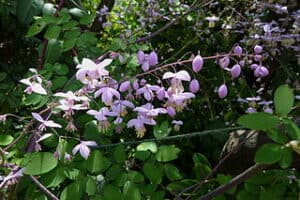
16 . King’s Mantle
King’s Mantle, also known as Thunbergia erecta, is a tropical shrub native to Africa. It is characterized by its lush green foliage and vibrant clusters of tubular flowers that can range from yellow to orange. This plant is often grown as an ornamental shrub in gardens and landscapes.
Interesting Facts:
- King’s Mantle is a fast-growing shrub, making it an excellent choice for providing quick coverage and color in gardens.
- It is commonly used as a hedge or as a backdrop for other flowering plants.
Mystery Story: In a hidden corner of an African rainforest, there’s a legend of a concealed clearing where King’s Mantle blooms under the enchanting glow of fireflies. It is said that anyone who discovers this clearing during a rare meteor shower will be blessed with the ability to understand the ancient songs of the jungle and communicate with its elusive creatures. Explorers and adventurers have ventured into the dense rainforest, guided by the mesmerizing light of the fireflies, hoping to unlock the secrets of the wilderness.

17 . Kalmia
Kalmia, commonly known as Mountain Laurel or Calico Bush, is a native shrub to eastern North America. It is admired for its evergreen foliage and clusters of beautiful, cup-shaped flowers that can range in color from white to shades of pink and purple. Mountain Laurel is a symbol of both strength and beauty.
Interesting Facts:
- The name “Mountain Laurel” is derived from its preference for growing in mountainous regions with acidic soils.
- The plant is associated with folklore and has been used to make walking sticks, also known as “laurelwood.”
Mystery Story: Deep within the dense Appalachian forests of North America, there’s a legend of a hidden glade where Kalmia blooms under the gentle moonlight, casting a magical aura. It is believed that those who find this glade during a lunar eclipse will be granted the power to heal wounds of the heart and mend broken spirits. Poets and wanderers have embarked on moonlit quests to discover this mystical glade, guided by the ethereal radiance of the Mountain Laurel.
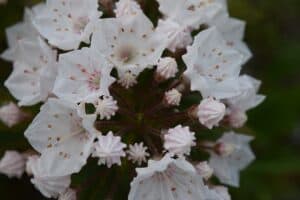
18 . Keli Flower
Keli Flower, scientifically known as Ixora coccinea, is a tropical evergreen shrub native to Southeast Asia. It is famous for its clusters of small, vibrant, and star-shaped flowers that come in a range of colors, including red, orange, yellow, and pink. This plant is commonly grown as an ornamental shrub and is associated with various cultural traditions.
Interesting Facts:
- Keli Flower is often used in traditional medicine in Southeast Asia for its purported medicinal properties.
- In some cultures, it is believed that planting Ixora in front of one’s home brings good luck and wards off evil spirits.
Mystery Story: In a remote village deep in the jungles of Southeast Asia, there’s a tale of a hidden garden where Keli Flowers bloom in colors that change with the phases of the moon. It is said that anyone who finds this garden during a lunar eclipse will be granted the power to understand the language of the plants and harness their healing properties. Herbalists and seekers of wisdom have ventured into the mystical rainforest, guided by the shifting hues of the Ixora blooms, hoping to unlock the secrets of natural remedies.
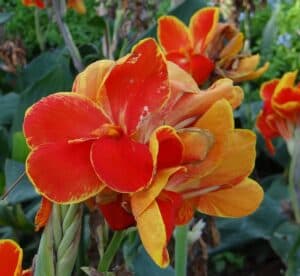
19 . Kalanchoe
Kalanchoe is a diverse genus of succulent plants native to Madagascar and other regions with arid climates. These plants are known for their fleshy leaves and colorful, bell-shaped flowers. Kalanchoes are popular houseplants and are prized for their low maintenance and ability to thrive in dry conditions.
Interesting Facts:
- Kalanchoe plants have been used in traditional medicine for their potential healing properties, particularly in treating wounds and respiratory issues.
- They are often associated with longevity and are sometimes referred to as “life plants.”
Mystery Story: In the arid landscapes of Madagascar, there’s a legend of a hidden oasis where Kalanchoe blooms in shades that seem to shimmer with the light of the desert sun. It is believed that those who find this oasis during a rare celestial alignment will be granted the power to endure extreme conditions and thrive in the harshest environments. Adventurers and desert nomads have ventured into the unforgiving desert, guided by the glistening petals of the Kalanchoe, hoping to unlock the secrets of survival.
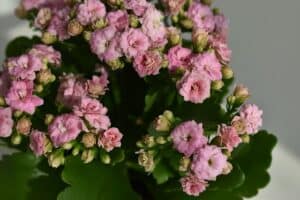
20. Kangkung (Ipomoea Aquatica)
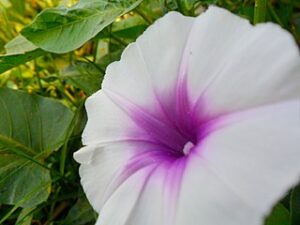
Kangkung, scientifically known as Ipomoea aquatica, is a semi-aquatic plant native to Southeast Asia. It is commonly known as water spinach or swamp cabbage and is a popular leafy vegetable in many Asian cuisines. Kangkung has small white or pink flowers, and its tender leaves are edible.
Interesting Facts:
- Kangkung is highly nutritious and is a good source of vitamins and minerals, including vitamins A and C.
- It grows well in waterlogged conditions and is often cultivated in rice paddies and along the edges of water bodies.
Mystery Story: In the tranquil waterways of Southeast Asia, there’s a legend of a hidden floating garden where Kangkung flourishes, its leaves said to hold the secrets of balance and harmony. It is believed that those who find this garden during a solar eclipse will be granted the ability to find peace in turbulent waters and bring equilibrium to their lives. Seekers of tranquility have embarked on boat journeys through the labyrinthine river networks, guided by the gentle rustling of the Kangkung leaves, hoping to unlock the wisdom of equilibrium.
21. King Solomon’s Seal (Polygonatum)
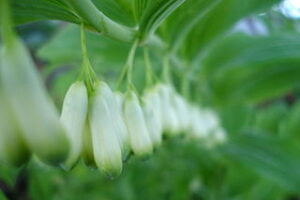
King Solomon’s Seal, scientifically known as Polygonatum, is a genus of flowering plants found in woodlands and forests of the Northern Hemisphere. These plants are characterized by their arching stems with pairs of hanging, bell-shaped flowers and distinctive, jointed rhizomes. King Solomon’s Seal has been used in herbal medicine and is associated with various folklore and traditions.
Interesting Facts:
- The name “King Solomon’s Seal” is derived from the markings on the rhizomes, which are said to resemble the seal of the biblical King Solomon.
- The plant has been used in traditional medicine to treat ailments such as respiratory issues and joint pain.
Mystery Story: In the depths of ancient woodlands, there’s a tale of a hidden grove where King Solomon’s Seal blooms with petals that shimmer with the wisdom of the ages. It is said that anyone who finds this grove during a lunar eclipse will be granted the ability to decipher ancient texts and unlock the secrets of forgotten knowledge. Scholars and historians have ventured into the enchanted forest, guided by the ethereal glow of the Polygonatum blossoms, hoping to unearth the mysteries of the past.
22. Kidney vetch (Anthyllis Vulneraria)

Kidney Vetch, scientifically known as Anthyllis vulneraria, is a wildflower found in various regions, including Europe and North America. It is characterized by its clusters of small, yellow or pinkish flowers and distinctive pinnate leaves. Kidney Vetch has historical uses in traditional medicine and has been associated with various cultural beliefs.
Interesting Facts:
- The common name “Kidney Vetch” is derived from the belief that the plant had medicinal properties related to kidney ailments.
- It is a favorite nectar source for butterflies and bees and is often planted to support pollinator populations.
Mystery Story: In the hidden meadows of Europe, there’s a legend of a concealed glen where Kidney Vetch blooms under the soft glow of fireflies. It is said that anyone who discovers this glen during a meteor shower will be granted the power to understand the whispers of the wind and the secrets of the earth. Nature enthusiasts and dreamers have ventured into the tranquil meadows, guided by the twinkling lights of the fireflies, hoping to unlock the wisdom of the natural world.
23. Kobus Magnolia (Magnolia Kobus)

Kobus Magnolia, scientifically known as Magnolia kobus, is a deciduous tree native to East Asia. It is celebrated for its early spring blossoms of fragrant, white or pale pink flowers that appear before the emergence of leaves. This magnolia species is revered for its elegance and symbolism.
Interesting Facts:
- Kobus Magnolia is often associated with purity and rebirth due to its pristine white flowers.
- The tree’s wood has been used in traditional woodworking for crafting furniture and artistic pieces.
Mystery Story: Deep within the serene forests of Japan and Korea, there’s a tale of a hidden sanctuary where Kobus Magnolia blooms under the tranquil moonlight, casting a serene aura. It is believed that those who find this sanctuary during a lunar eclipse will be blessed with the power to understand the wisdom of the ancient trees and communicate with the spirits of the forest. Monks and seekers of enlightenment have embarked on spiritual journeys to discover this mystical sanctuary, guided by the ethereal luminosity of the Magnolia blossoms.
24. Kiss me over the garden gate (Polygonum Orientale)
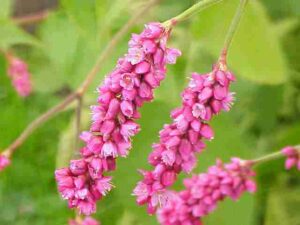
Interesting Facts:
- The common name “Kiss Me Over the Garden Gate” suggests a sense of romanticism and nostalgia, evoking images of secret garden rendezvous.
- The plant’s pendulous clusters of flowers make it a charming addition to cottage gardens.
Mystery Story: In the heart of an ancient Asian garden, there’s a legend of a hidden pergola where Kiss Me Over the Garden Gate blooms under the soft illumination of lanterns. It is said that anyone who discovers this pergola during a lunar eclipse will be granted the power to see into the future and understand the language of dreams. Astrologers and mystics have embarked on nocturnal quests to uncover this mystical pergola, hoping to unveil the secrets of fate.
25. Kohlrabi (Brassica Oleracea)
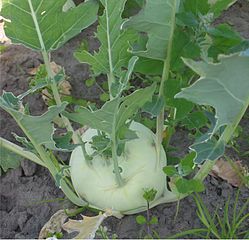
Kohlrabi, scientifically known as Brassica oleracea var. gongylodes, is a unique vegetable that belongs to the cabbage family. It is characterized by its bulbous stem, which can be green or purple, and its edible leaves. While not typically grown for its flowers, kohlrabi has culinary and nutritional significance.
Interesting Facts:
- Kohlrabi is rich in vitamins and minerals, including vitamin C and potassium, making it a nutritious addition to meals.
- Its name is derived from the German words “kohl” (cabbage) and “rübe” (turnip), describing its taste and appearance.
Mystery Story: In a quaint European village, there’s a tale of a hidden garden where Kohlrabi thrives, its leaves and stems said to hold the power of nourishment and vitality. It is believed that anyone who finds this garden during a harvest moon will be granted the ability to cultivate bountiful crops and provide sustenance to their community. Farmers and caretakers of the land have ventured into the moonlit fields, guided by the gentle rustling of the Kohlrabi leaves, hoping to unlock the secrets of abundance.
26. Kunzea (Kunzea Ambigua)
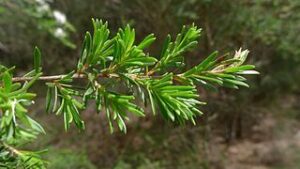
Kunzea, scientifically known as Kunzea ambigua, is a flowering plant native to Australia and New Zealand. It is a member of the Myrtaceae family and is known for its small, five-petaled flowers that can range in color from white to shades of pink. Kunzea is often found in heathlands and coastal regions.
Interesting Facts:
- Kunzea is valued for its essential oil, which is derived from its leaves and branches and is used in aromatherapy and traditional medicine.
- It is a resilient plant, adapted to thrive in harsh conditions, and is often used for reclamation and land restoration projects.
Mystery Story: In the rugged wilderness of Australia’s coastal regions, there’s a legend of a hidden coastal cove where Kunzea blooms under the gentle sea breeze, its petals said to carry the essence of the ocean’s serenity. It is believed that anyone who discovers this cove during a rare alignment of the planets will be blessed with the ability to understand the language of the waves and the ancient tales of the sea. Adventurers and storytellers have ventured to the secluded coast, guided by the tranquil rustling of the Kunzea blossoms, hoping to unlock the mysteries of the ocean’s lore.
I hope you get the answer on “flowers that start with k” and if you would like to read more check below.
Calla Lily Flower – Meaning And Symbolism
Aloe Vera Flower – What to do, When and How often It Bloom?
